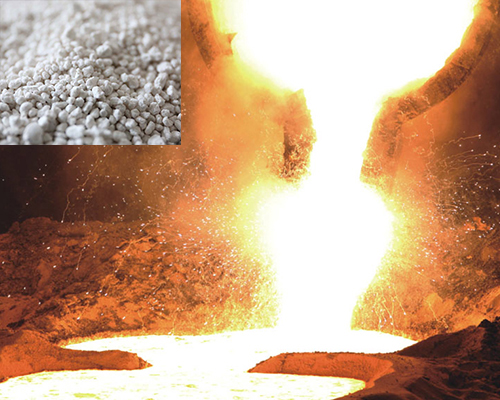Flux for Brazil Aluminum is a granular refining flux. After a large number of applications, the refining agent has been proved to be the best choice for aluminum. The degassing and slagging effect of aluminum alloy is remarkable.
Flux for Brazil Aluminum is sprayed by carrier gas (nitrogen or argon) to the bottom of the molten pool, thereby forming a large number of bubbles in the aluminum liquid.
The bubbles float upward from the bottom. The medium is in full contact with the molten metal, and the gases and inclusions in the molten aluminum are brought to the surface of the molten aluminum through physical and chemical effects, and the purpose of metal degassing and slag removal is achieved at the same time.
Flux for Brazil Aluminum uses the principle of combining metal and liquid compounds to develop and configure products to reduce smoke and dust, reduce combustion, and be environmentally friendly and economical.
Companhia Brasileira de Alumínio (CBA), Brazil’s largest aluminum producer, has signed an agreement to acquire 80% of Alux do Brasil in Nova Odessa-SP at a price of 110 million reais, with priority purchase of the remaining 20% from the third year after the transaction is completed.
Alux do Brasil is one of Brazil’s largest producers of secondary aluminum alloys and has major players in the automotive sector as its customers. In addition to expanding its secondary aluminum production capacity by approximately 20%, the Alux plant will also enable CBA to enter new market segments. However, this acquisition strengthens CBA’s position in the Brazilian recycling market and expands its basis for further expansion in the future, including new markets.
CBA CEO Ricardo Carvalho said: “This acquisition is in line with our long-term strategy to increase secondary aluminum production capacity, and will also help us commit to producing aluminum with a smaller and smaller carbon footprint. The company has already produced low-carbon aluminum and plans to reduce greenhouse gas emissions by 40% in the process from mining to melting by 2030.”

